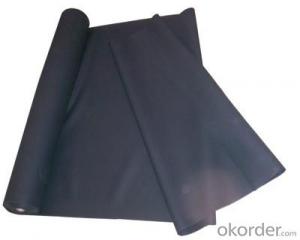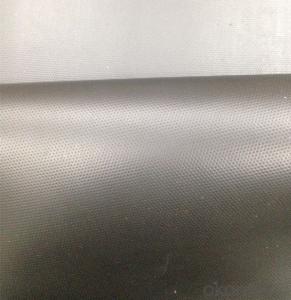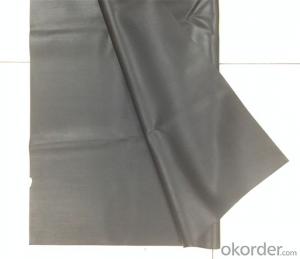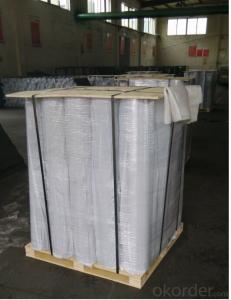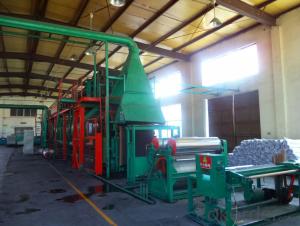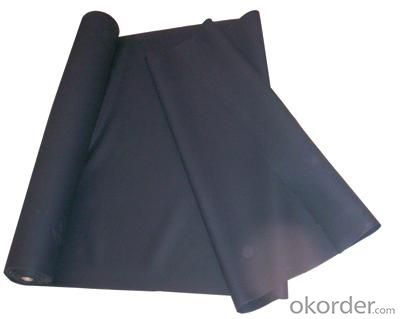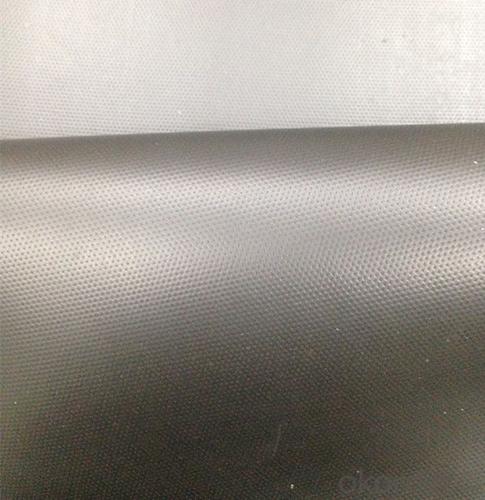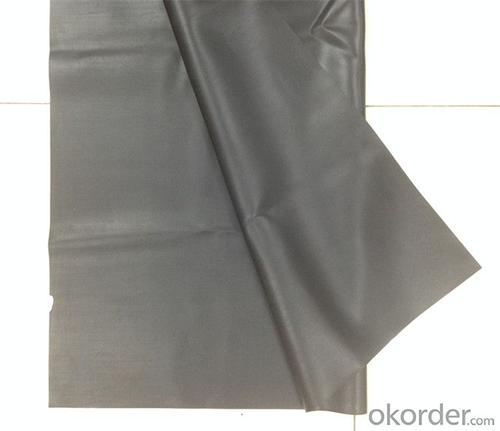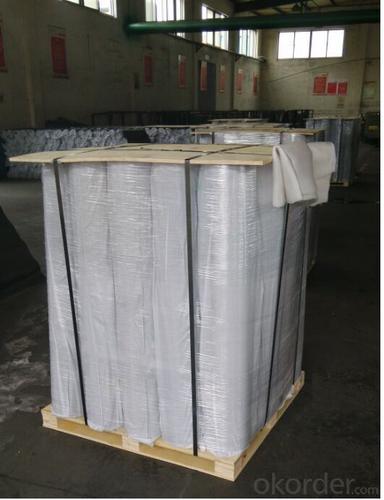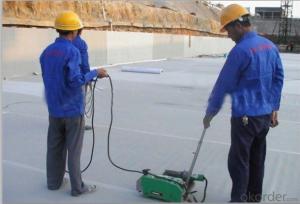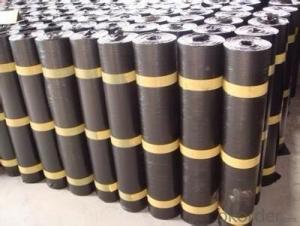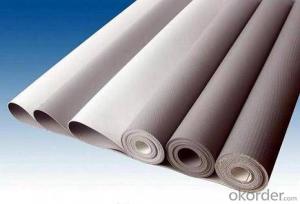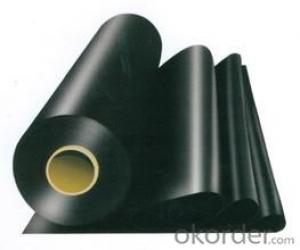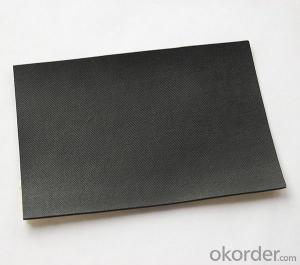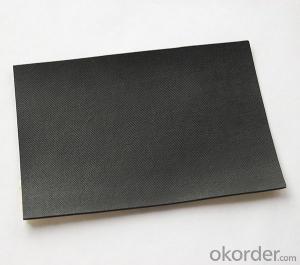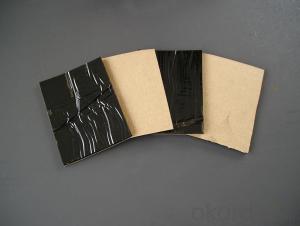EPDM Rubber Membrane Waterproof Prodcuts Roll
- Loading Port:
- Qingdao
- Payment Terms:
- TT OR LC
- Min Order Qty:
- 3000 m²
- Supply Capability:
- 200000 m²/month
OKorder Service Pledge
OKorder Financial Service
You Might Also Like
EPDM Rubber Waterproof Membrane
Product Instruction:
EPDM rubber waterproof membrane is made from ternary ethylene-propylene rubber,which is designed for waterproofing of exposed and non-exposed applications. EPDM waterproof membrane is of high elasticity among high polymer waterproof materials and becomes a world-popular waterproofing material.
CNBM own the wold-advanced equipment of cold feeding extrusion and continuous vulcanization technology. With the best performance among high polymer waterproof materials, EPDM is of exceptional elasticity and will not split or cracked under normal building movement.
Product Features:
-Excellent weather-ability, durability and size stability
-Good adaptability to high and low temperature, UV resistant and anti-corrosion
-High tensile strength and good elongation, accommodating to structure movement
-Easy installation, solid joint, and mo environmental pollution
-Good rooting penetration resistance
-Service life up to 50 years
Applications:
-Roof, basement, tunnel, pond liner, dam
-Industrial and civil building waterproofing
-Geosynthetic liner for fish ponds, swimming pools, channels, irrigation system
-Especially suitable for projects with high requirement in durability, anti-corrosion and deformation
Specifications:
-Width of roll: 1.2m, 2m, 4m
-Length of roll: 20m, 30m or customized
-Thickness of membrane: 1.2mm, 1.5mm, 2mm
-Type: vulcanized EPDM or welding EPDM
-Application: roof, basement, pond, lake, swimming pool, steel structure roofing, underground, tunnel, etc
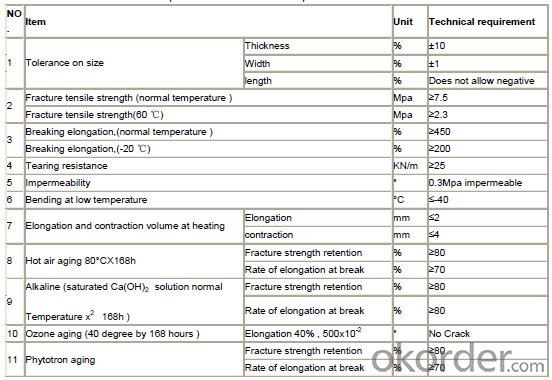
FAQ:
1. Is your EPDM waterproof membrane the real rubber?
Yes, our EPDM membrane is made from top quality rubber, which is imported from America. We support samples for testing, or testing in our factory.
2. How's your products quality?
Our EPDM is with the top quality at home and abroad. Our quality is much higher than Chinese standard. Our product is widely used in Chinese Central government projects. And it's also accpted by customers all over the world, such as EU, USA, Astrulia, etc.
3. What's the service life of your EPDM membrane?
The service life of our EPDM membrane is more than 50 years.
4.What's your MOQ?
Our MOQ is 3000M2.
5. What's your product ability of EPDM membrane?
We own the largest EPDM production line in China. Our product ability of EPDM membrane reaches 2 million square meter per year.
Photos:
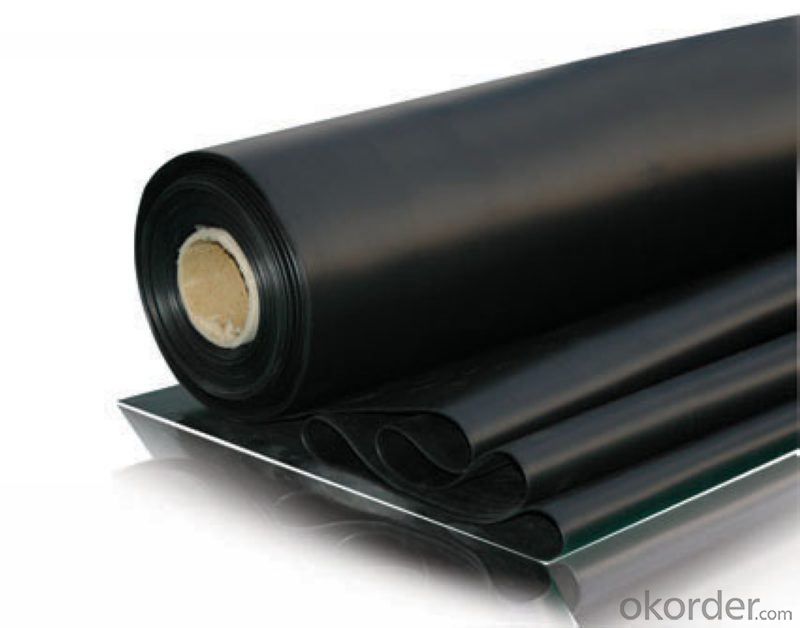
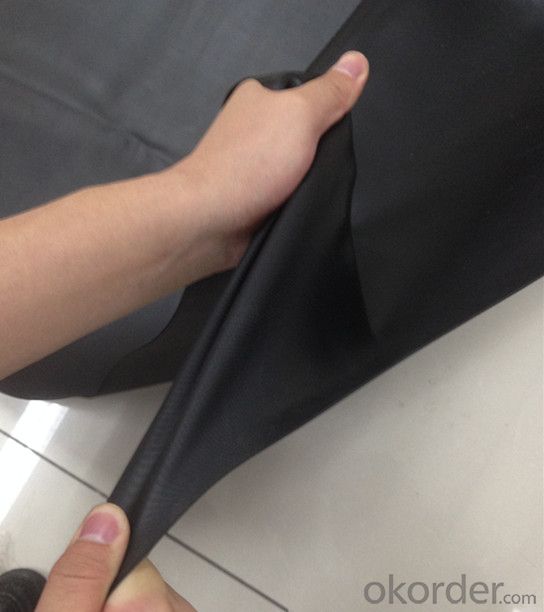
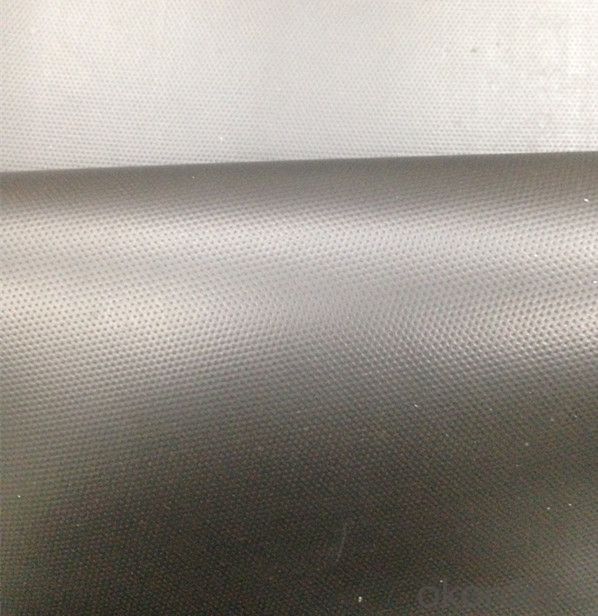
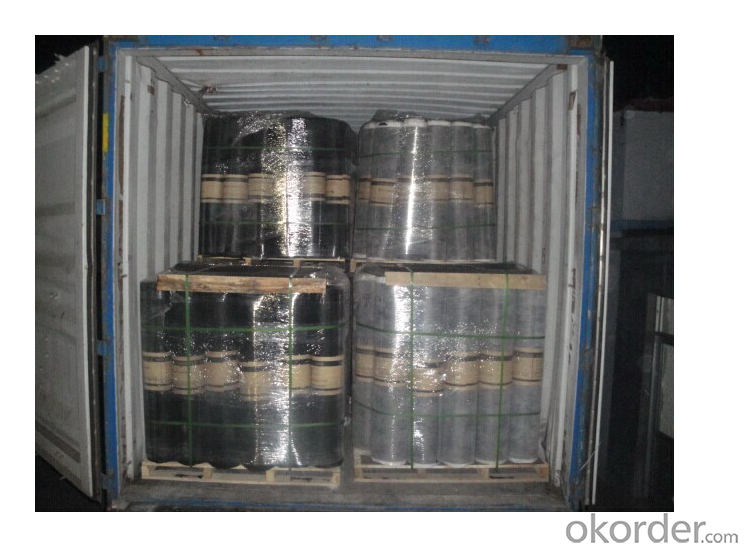
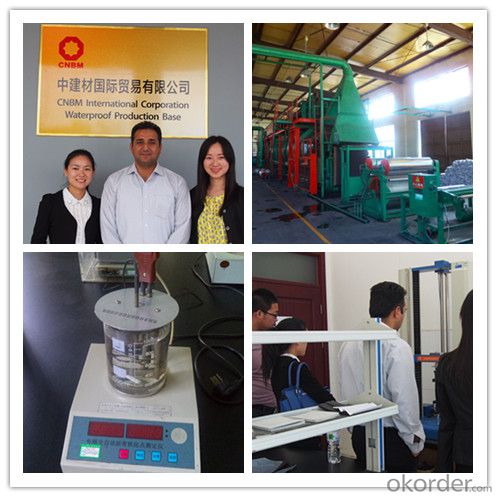
- Q: Can a waterproofing membrane be used on insulation surfaces?
- Indeed, one can apply a waterproofing membrane to insulation surfaces. In fact, it is often advised to incorporate a waterproofing membrane above insulation as an extra layer of defense against water infiltration. This is particularly crucial in areas where moisture poses a concern, such as basements, roofs, or exterior walls. The waterproofing membrane functions as a barricade, preventing water from permeating the insulation and causing harm. It also aids in preserving the insulation's integrity and effectiveness by keeping it dry. Furthermore, certain waterproofing membranes have the added advantage of enhancing the insulation's energy efficiency by reducing air leakage and heat transfer. All in all, utilizing a waterproofing membrane on insulation surfaces is an intelligent and practical solution to safeguard your building or home from water damage.
- Q: Can a waterproofing membrane be used on cinder block surfaces?
- Yes, a waterproofing membrane can be used on cinder block surfaces. It provides an effective barrier against water penetration and helps to protect the cinder block from moisture-related damage.
- Q: Can a waterproofing membrane be removed or replaced if necessary?
- Yes, a waterproofing membrane can be removed or replaced if necessary. The process involves carefully removing the existing membrane and replacing it with a new one to ensure effective waterproofing.
- Q: Can a waterproofing membrane be used on chrome surfaces?
- No, a waterproofing membrane is not suitable for use on chrome surfaces as it is designed to be used on porous materials such as concrete or wood to prevent water penetration. Chrome surfaces are already water-resistant, so applying a waterproofing membrane would be unnecessary and may damage the chrome finish.
- Q: How does a waterproofing membrane handle exposure to UV rays and sunlight?
- Various mechanisms are employed in the design of a waterproofing membrane to withstand exposure to UV rays and sunlight. Firstly, UV stabilizers and additives are incorporated into most waterproofing membranes to shield the material from the harmful effects of prolonged UV radiation. These stabilizers effectively prevent the membrane from deteriorating and breaking down when exposed to sunlight. In addition, many waterproofing membranes are manufactured with reflective pigments or coatings that assist in reflecting a significant portion of the sun's rays. This reflective quality reduces the absorption of UV radiation, minimizing heat absorption by the membrane. Consequently, the membrane remains cooler, bolstering its durability and extending its lifespan. Furthermore, certain waterproofing membranes are reinforced with materials like fiberglass or polyester to provide extra strength and resistance against UV rays. These reinforcing materials act as a barrier, safeguarding the membrane from direct exposure to sunlight and diminishing the risk of sun damage. It should be noted that although waterproofing membranes are designed to withstand UV exposure, their performance can be influenced by factors such as the intensity and duration of sunlight exposure, climate conditions, and maintenance practices. Regular inspections and maintenance, including the application of UV protective coatings or sealants, can aid in prolonging the life and effectiveness of the waterproofing membrane in areas with high UV exposure. Ultimately, a well-designed and correctly installed waterproofing membrane is engineered to endure UV rays and sunlight, ensuring long-term protection and durability for the underlying structure.
- Q: DTM.E polyester composite waterproofing membrane, cheaper than the asphalt membrane?
- the product in line with GB18173-2006 "polymer waterproof material" national standards.
- Q: Can a waterproofing membrane be used in conjunction with warranty or insurance policies?
- Yes, a waterproofing membrane can typically be used in conjunction with warranty or insurance policies. Many waterproofing products and systems come with warranties that provide coverage for a certain period of time, typically ranging from 5 to 20 years or more. These warranties often guarantee the effectiveness and durability of the waterproofing membrane, and may cover repairs or replacements in case of any failures or defects. Additionally, insurance policies may also provide coverage for damages caused by water leaks or flooding. By installing a waterproofing membrane, property owners can mitigate the risk of water damage and potentially reduce their insurance premiums. It is advisable to check with your insurance provider to determine if they offer any discounts or incentives for using waterproofing systems. However, it is important to note that the coverage provided by warranties and insurance policies may vary depending on the specific terms and conditions. It is recommended to carefully review the details of the warranty or insurance policy and consult with professionals to ensure that the waterproofing membrane meets the requirements and specifications outlined by these agreements.
- Q: Are there any specific considerations for installing a waterproofing membrane on stucco surfaces?
- Installing a waterproofing membrane on stucco surfaces requires careful consideration. Firstly, the stucco surface must be thoroughly cleaned and free from any dirt, debris, or loose material. This can be achieved by either power washing or scrubbing the surface with a stiff brush and water. Secondly, it is crucial to select the appropriate waterproofing membrane for stucco surfaces. Various options are available, including liquid-applied membranes, sheet membranes, or peel-and-stick membranes. It is imperative to choose a membrane that is compatible with stucco and offers a strong and durable barrier against water penetration. Another aspect to consider is the proper application technique. The membrane should be evenly and smoothly applied to ensure complete coverage over the entire stucco surface. It is important to follow the manufacturer's instructions and guidelines for the specific membrane being used. Additionally, special attention should be given to details and transitions, such as areas around windows, doors, vents, or other penetrations. These vulnerable points are more prone to water infiltration, so it is essential to adequately seal and waterproof them using additional techniques or products, such as flashing or caulking. Furthermore, the climate and weather conditions in the area must be taken into account. If the stucco surface is exposed to extreme temperatures or frequent freeze-thaw cycles, it is advisable to choose a waterproofing membrane that can withstand these conditions and provide long-lasting protection. Lastly, regular inspection and maintenance of the waterproofing membrane are vital to ensure its effectiveness over time. It is recommended to periodically check for any signs of damage, such as cracking, peeling, or bubbling, and promptly address any issues to prevent water infiltration and potential damage to the stucco surface. In conclusion, when installing a waterproofing membrane on stucco surfaces, it is necessary to clean the surface, select the appropriate membrane, apply it correctly, pay attention to details and transitions, consider the climate, and regularly inspect and maintain the membrane for long-term protection against water penetration.
- Q: Can a waterproofing membrane be used for soundproofing purposes?
- No, a waterproofing membrane cannot be used for soundproofing purposes as it is specifically designed to prevent the penetration of water and does not have the necessary properties to effectively block or absorb sound waves.
- Q: Can waterproofing membranes be used on concrete block walls?
- Yes, waterproofing membranes can be used on concrete block walls. These membranes are specifically designed to prevent water penetration and can effectively protect concrete block walls from moisture damage.
Send your message to us
EPDM Rubber Membrane Waterproof Prodcuts Roll
- Loading Port:
- Qingdao
- Payment Terms:
- TT OR LC
- Min Order Qty:
- 3000 m²
- Supply Capability:
- 200000 m²/month
OKorder Service Pledge
OKorder Financial Service
Similar products
Hot products
Hot Searches
Related keywords
